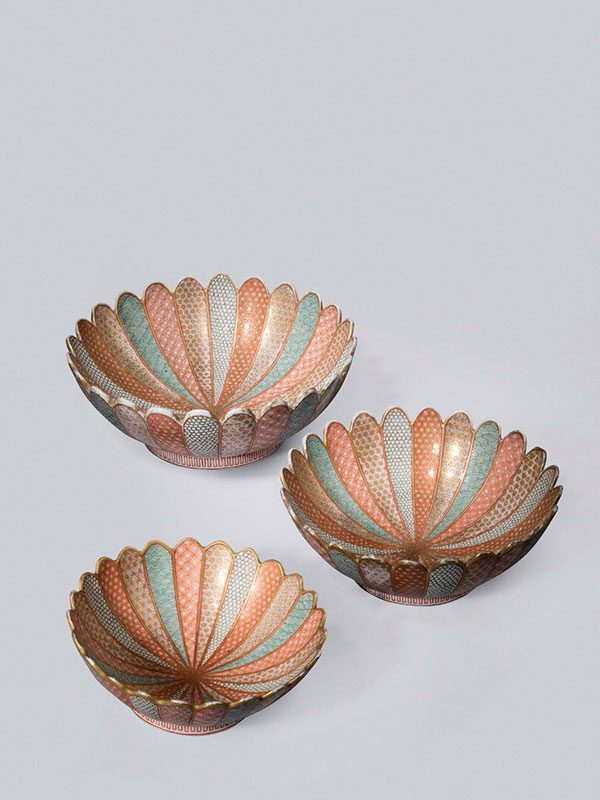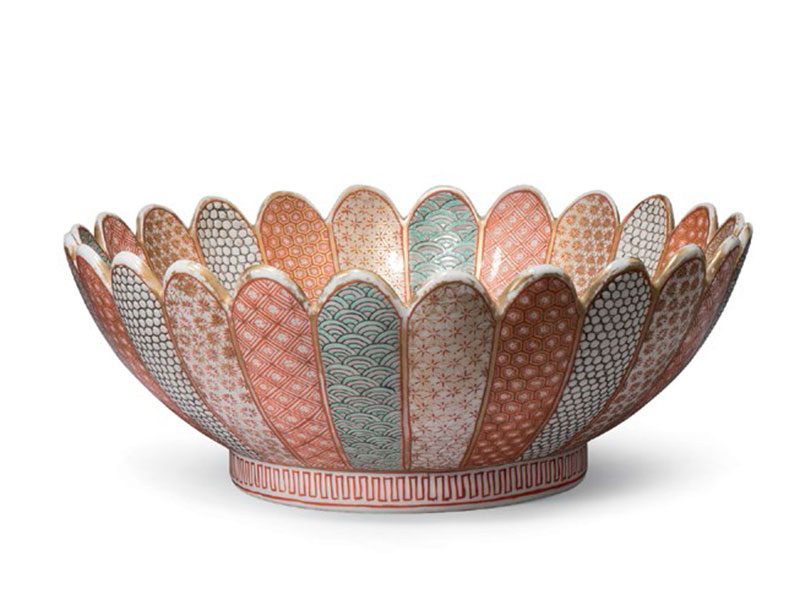Set of three porcelain bowls
A set of three graduated porcelain bowls, each of chrysanthemum shape with petalled sides, the interior and exterior enamelled with bands of different diaper pattern and waves, all in colours on a white ground. The top edge of each bowl is outlined in gold, while a key fret edge is painted in iron red on the outside of each foot ring. The recessed bases are glazed in white.
In which kiln precisely these charming bowls were produced is uncertain, but the material looks closely related to Satsuma porcelain. Satsuma ware is a style of Japanese earthenware originally from the Satsuma region of what is today southern Kyushu. By adapting their gilded polychromatic enamel overglaze designs to appeal to the tastes of western consumers, manufacturers of the latter made Satsuma ware one of the most recognized and profitable export products of the Meiji period. The decoration also resembles that seen on a late 18th century Imari plate, exhibited at the Fitzwilliam Museum in 1998.1
- Impey, O. The Lost Century, Japanese Arita Porcelain 1720 – 1820 in Britain, Fitzwilliam Museum Enterprises Ltd, no. 241, p. 38


